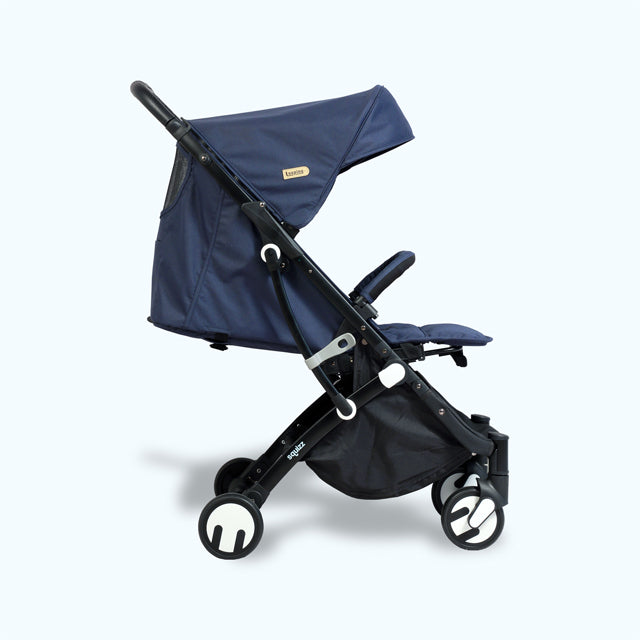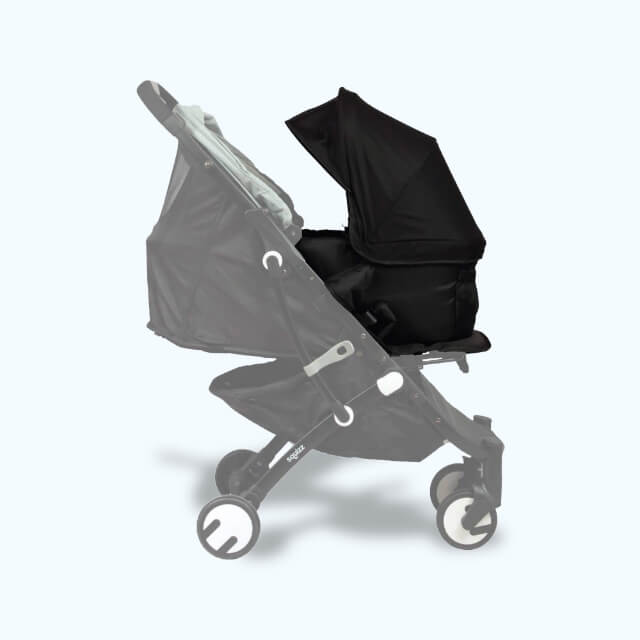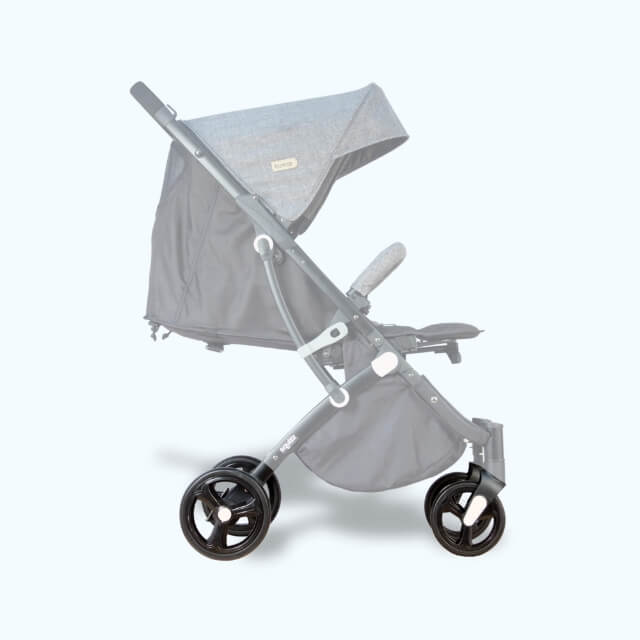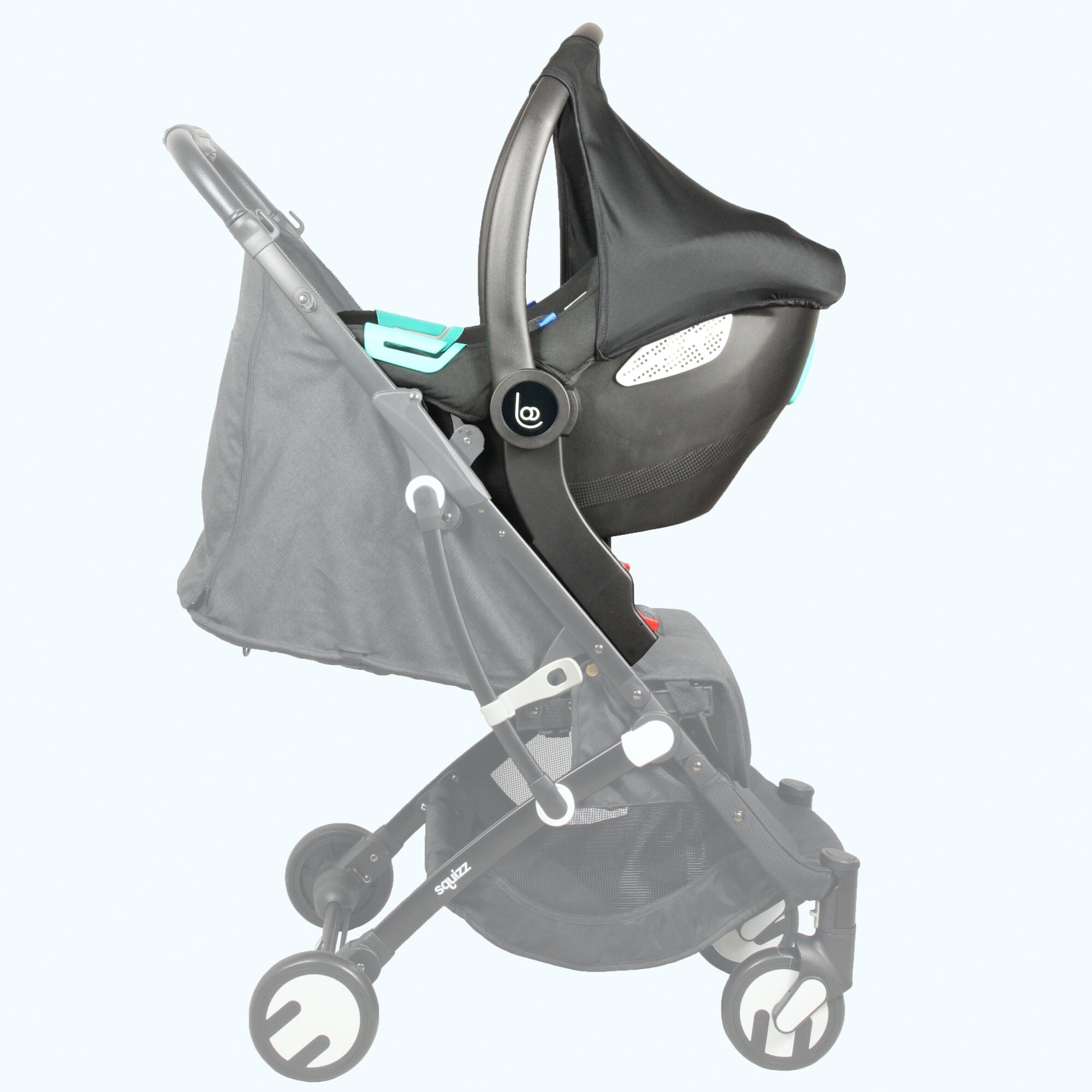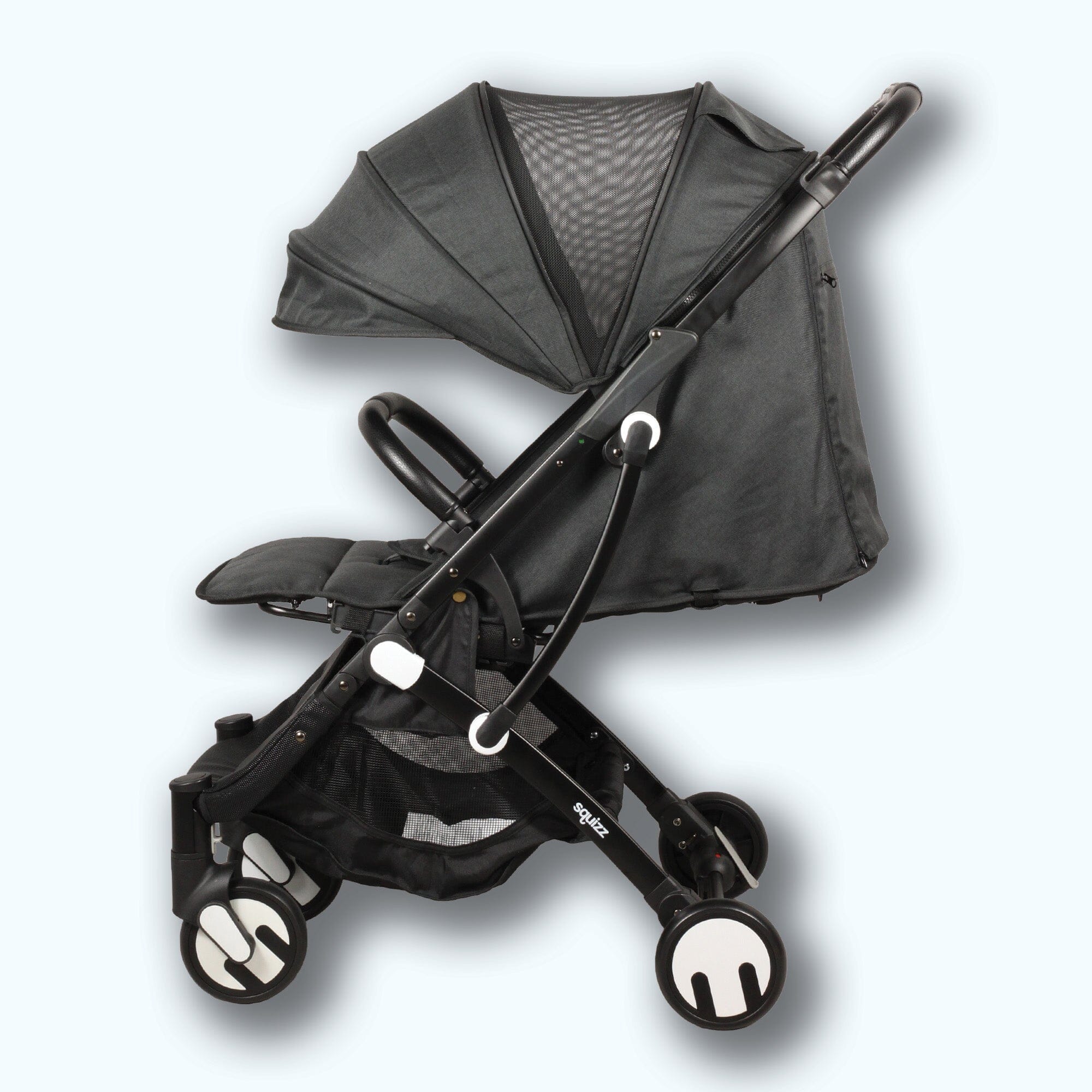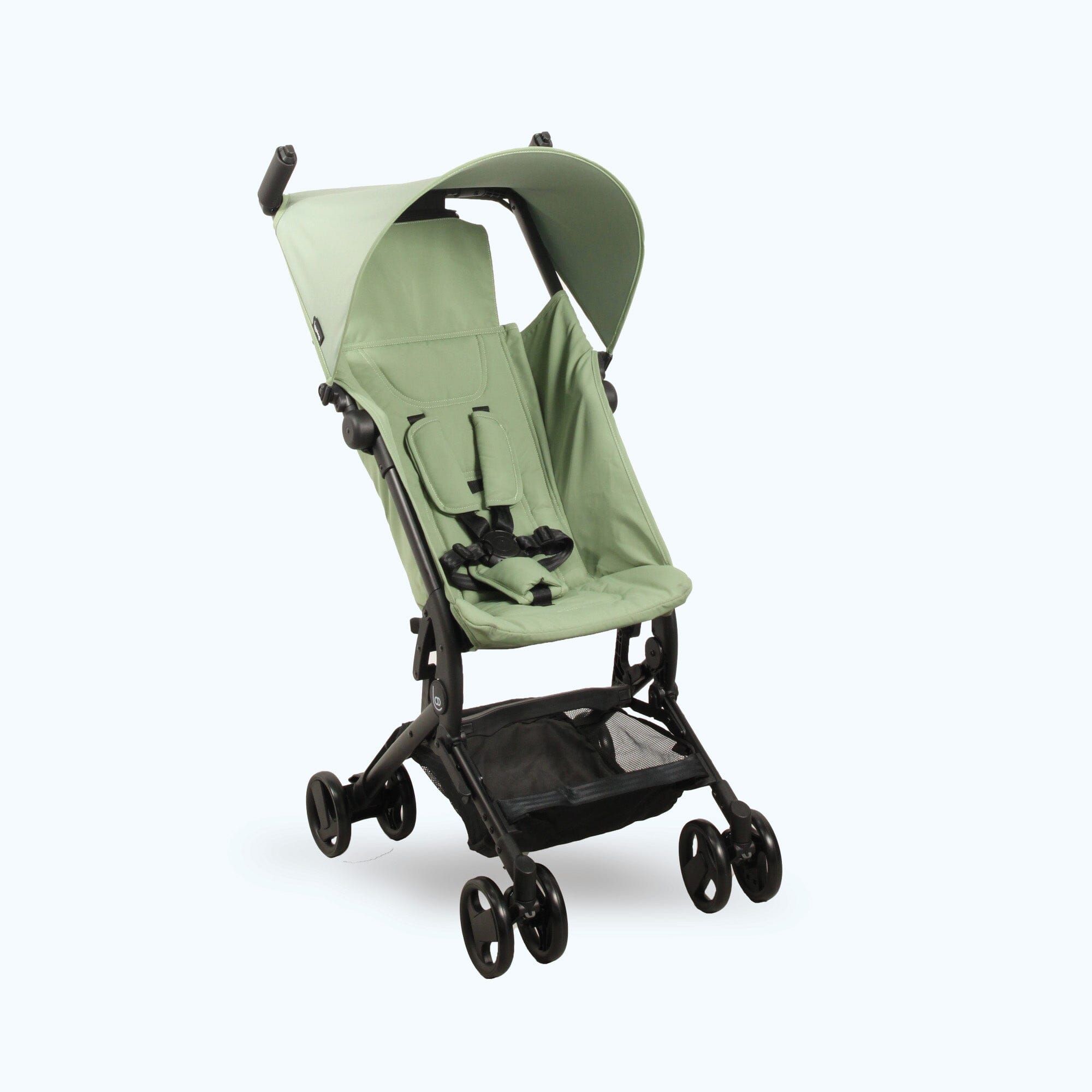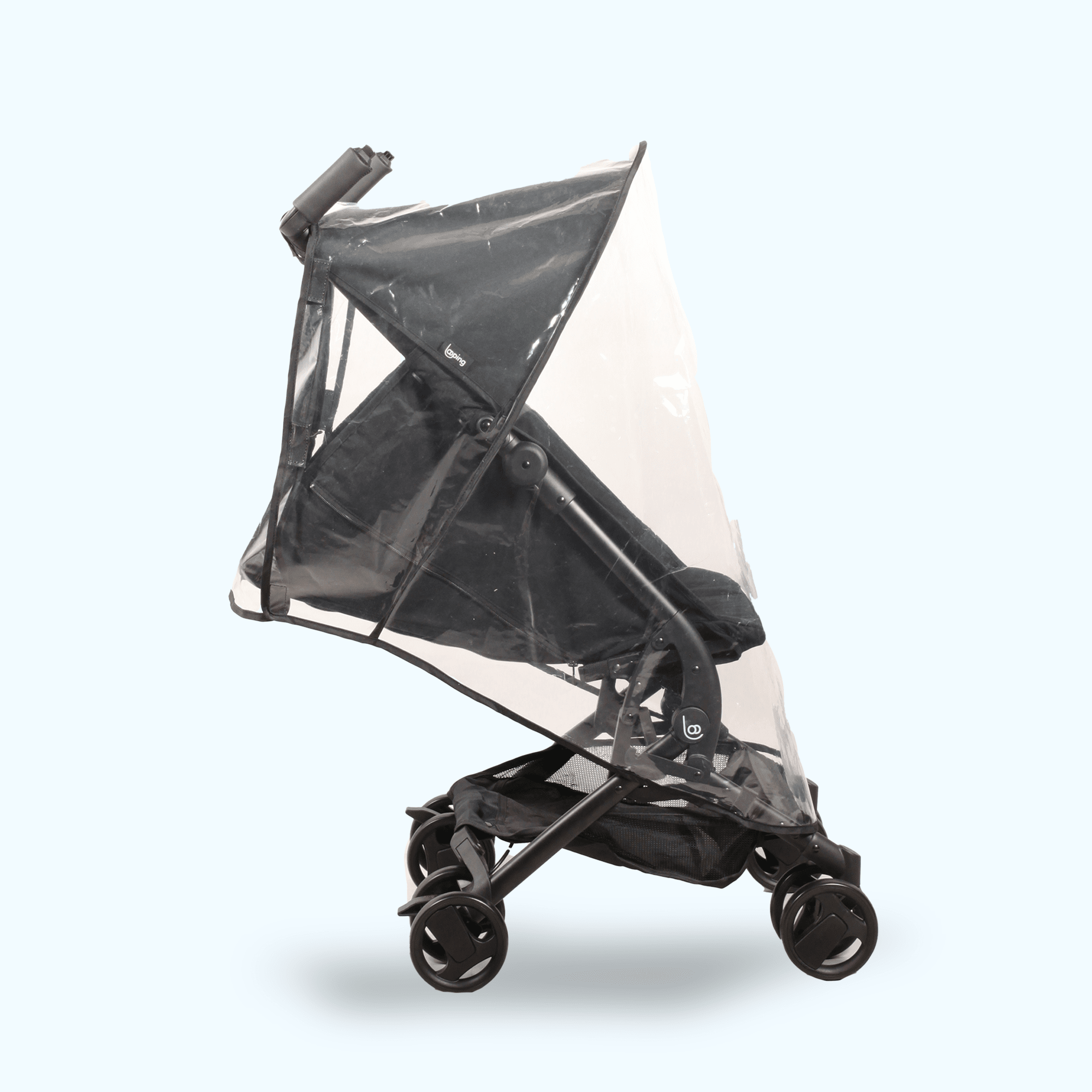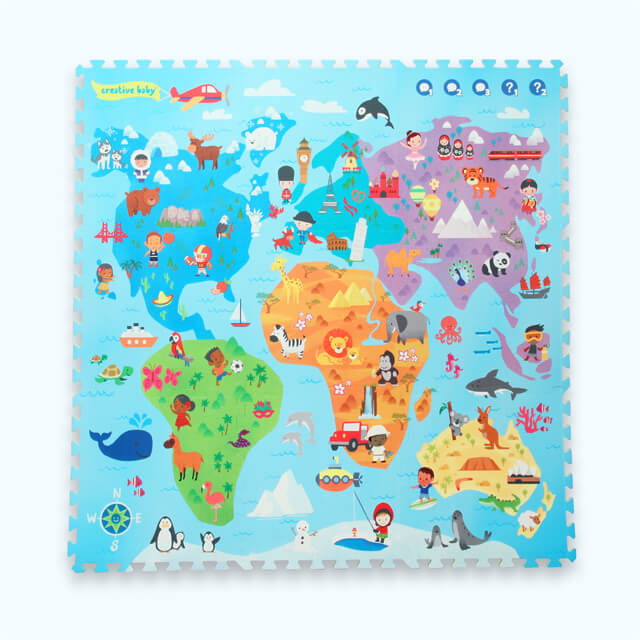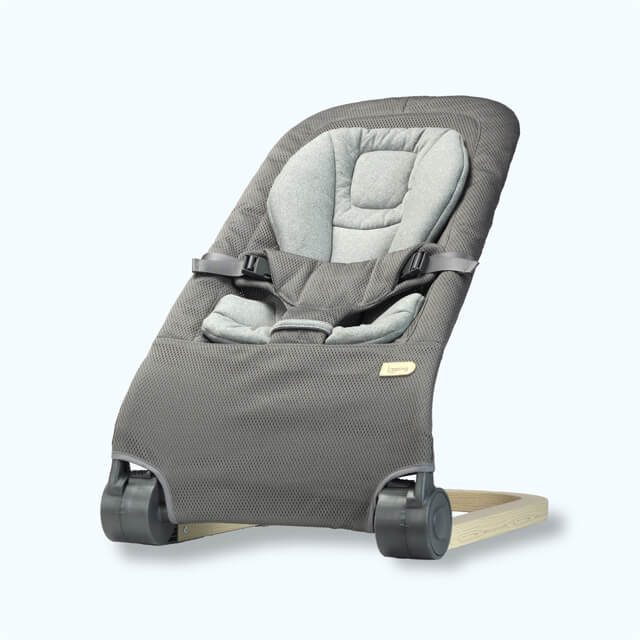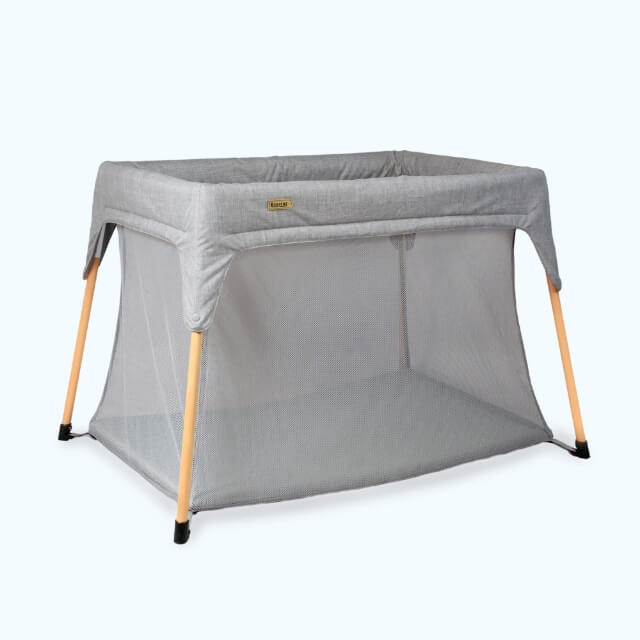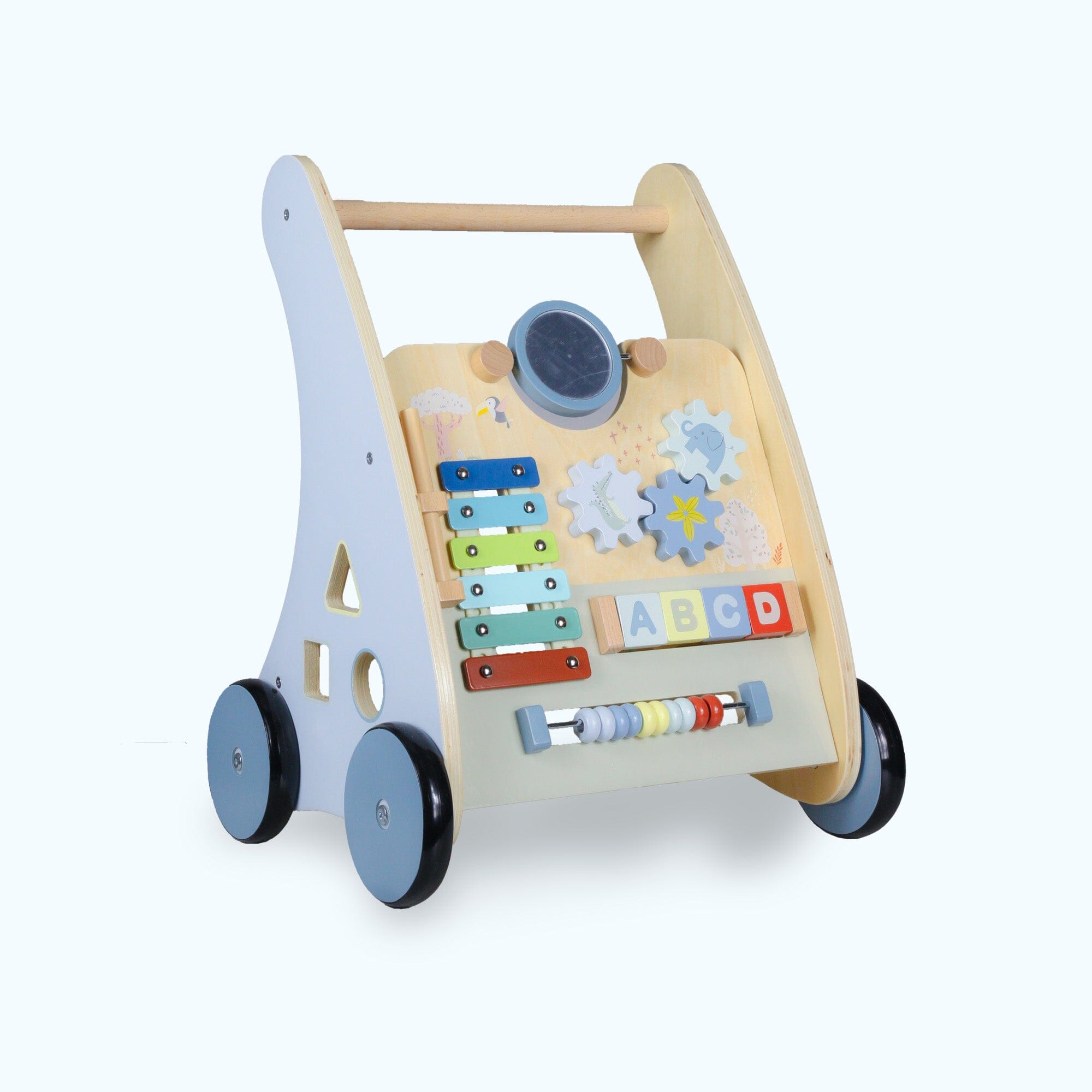Every year, around 19,000 children aged 0 to 14 are injured in accidents involving cribs in European Union Member States. These accidents are serious enough to require a visit to the emergency department.
A new report from the HAS (Haute Autorité de Santé) was recently released and informs us about the prevention of positional cranial deformations and sudden infant death.
The objective of our article is to try to explore the different possibly dangerous interactions of children with products, to explore new trends, and to summarize the risks to which babies could be exposed during periods of sleep when they are not is not under adult supervision.
We will also talk about the benefits of sleep for babies but also for children, and how to optimize it.
Sudden infant death syndrome (MSN) and plagiocephaly (flat head syndrome): definitions
SIDS is the sudden death of a young, apparently healthy child, aged one month to one year, while sleeping. The correct French medical term in 2008 is sudden unexplained infant death (SIDN). In 2009, the term unexpected infant death (IMD) is now used to take into account all cases of death occurring suddenly in an infant when nothing in its known antecedents could have predicted it.
Plagiocephaly is a deformation of the infant's skull giving it an asymmetrical shape, often referred to as “flat head syndrome”. There is a wide spectrum of head shapes in children, and the prevalence of plagiocephaly increases until four months of age, then decreases with age. In the vast majority of cases, it is a benign anomaly that resolves before the age of two and is often the result of the baby lying on his back.
What are the consequences of plagiocephaly?
The presence of plagiocephaly can be a marker of developmental delay, which implies a need for screening. Mandibular asymmetry (facial asymmetry) can also be an anatomical consequence of cranial deformation. In addition, plagiocephaly can cause ophthalmological complications (visual field abnormalities), scoliosis, but also a higher frequency of otitis media (although not statistically significant).

The main risk factors for plagiocephaly identified are:
- The supine position
- The preferred position of the head
- Presence of a torticollis (functional torticollis forces the infant to always rest his head on the same side, all of these attitudes causing clearly unilateral deformations)
- Male (boys tend to be more hypotonic and less active than girls in the first months of life)
- Multiple pregnancy
- Feeding method
- Position during breastfeeding
- Developmental delay
- Hypotonia
- Prematurity
Risks often encountered
Baby's environment
Although you may dream of a bed for your baby adorned with soft bedding, this vision does not meet current official recommendations to prevent the risks of suffocation, plagiocephaly and SIDS (sudden infant death syndrome).
Indeed, most sudden infant deaths are caused by the baby's suffocation with his face buried under a duvet, in a mattress that is too soft, a pillow or a padded bed bumper. As we will see, the safest sleeping environment in a crib or bassinet or bassinet is a fitted sheet on a firm crib mattress, with no additional bedding accessories or other soft objects in the crib. . Simplicity here will be a guarantee of security.
Many organizations and associations warn that extra accessories like bedding can pose a significant danger to babies. For example, an infant can get stuck between an ill-fitting mattress and a headboard. Some bed frames that do not comply with current standards can cause a part of the infant's body to pass through an area while trapping the baby's head. Beds with bars normally meet standards to avoid any entrapment.

Co-sleeping
Another very common practice can turn out to be dangerous: co-sleeping . It's a growing trend among families: more and more mothers are choosing to share a bed with their newborn. This practice is common because it seems to offer many advantages, such as encouraging breastfeeding by making night-time breastfeeding more practical. Co-sleeping also allows a breastfeeding mother to more easily synchronize her sleep cycle with that of her baby. It also helps babies fall asleep more easily, especially in the first few months and when they wake up in the middle of the night. They also sleep more at night because they wake up more often with a shorter feeding duration, which can result in a greater amount of sleep throughout the night. Co-sleeping can also allow parents to reconnect with their child after being separated from them during the work day.
But do these benefits of bed sharing outweigh the risks?
Unfortunately, this practice goes against medical advice, and should be absolutely avoided with a child under 4 months of normal weight. Studies have shown that bed sharing is the most common cause of death among babies, especially those 3 months and younger.
In some non-Western cultures, bed-sharing is also common and the number of related infant deaths appears to be lower than in the West. Differences in data recording, mattresses, bedding and other cultural practices may explain this.
In addition to potential safety risks, infants who sleep with their parents learn to associate sleep with the proximity of a parent in bed, which can become a problem at nap time or when the baby needs to sleep. falling asleep before the parent is ready. The immediate proximity of the baby can affect the quality of sleep of parents who will wake up, worried by every noise made by the baby or the slightest movement. During the first months, parents must be able to recover and be in good shape to transmit to the baby the serenity necessary for his harmonious development. The baby will feel tired or unavailable from his parents and especially from his mother if he is breastfeeding.

Baby's position
According to statistics, a large majority of babies who slept on their stomachs died from SIDS, although it has not been proven that the position was the source of babies' deaths. But according to the High Authority of Health, making a baby sleep on their stomach increases the risk of sudden infant death by five. With the CNPP (National Professional Council of Pediatrics), it reaffirms, in a recent study, that “sleeping on the back is imperative to prevent unexpected infant death”. Lying in this position (recommended up to one year), the baby's nose and mouth are clear, there is nothing preventing him from breathing.
For centuries, babies in Europe were laid on their backs. The Anglo-Saxon habit of laying them on their stomachs was introduced in Europe in the 1970s to reduce the risk of sudden death. In 1990, Australia, New Zealand and the United States recommended putting babies to sleep on their backs and this position is also recommended in France. The prone position was justified by better ventilation and by improving the permeability of the airways by avoiding the danger of hyperflexion of the spine when the child lying on his back rests his head on a pillow. Laying the baby on his stomach prevents the jaw and tongue from falling backward and prevents the inhalation of regurgitated food.
Products intended for sleep can be dangerous
The magazine “60 million consumers” investigated in its new issue the equipment sold to improve the sleep of toddlers. The magazine explains that many of these products sold are potentially dangerous and can particularly cause an increased risk of suffocation.
Parents can spend a lot of money to make their baby sleep better. This may involve specific childcare equipment: baby wedges, ergonomic mattresses, bed reducers, etc. But some products can be dangerous for toddlers. According to them, “ equipment can hinder the newborn's breathing, which is only done through the nose and not through the mouth. ” Pediatricians insist: this equipment would increase the risk of turning and blocking the nose. Furthermore “ If his head is tilted too far forward, [...] the tongue, by exerting pressure at the back of the mouth, can reduce or block the upper airways, ” specifies the magazine.
However, certain childcare equipment designed for baby's comfort does not always comply with these recommendations. This is the case for certain beanbags, reclined deckchairs or baby wedges cited by the magazine. They are not safe because they elevate their head, the materials are too soft and they change the position of the baby while sleeping. A controversy is initiated between the different actors in which each party develops their own arguments.
For example, deckchairs with a steep inclination (more than 10 degrees) and intended for nighttime sleep were banned in April 2019 by the American authorities after 73 deaths were recorded. The recall had been extended to France. In addition, certain baby restraints were banned in 2010 after a dozen deaths from asphyxiation were recorded. “ When turning around, the little ones found their faces pressed against the bolster or the upper edge of the product, ” while they were not held in place by the seat belt, explains the magazine 60 million consumers. It is recommended that you never use a deckchair to put a baby to sleep.
The recommended solutions
Baby's environment
All of these elements mentioned above are factors in an increased risk of accidents due to suffocation, entrapment and strangulation. You must use common sense to keep your baby away from all the risks linked to:
- Choking : no soft materials or objects.
- For jamming : use products and sleeping arrangements that comply with the European standard with as little sophistication as possible. Whether you choose a bed, a cradle or a bassinet, the ideal for your newborn would be to use a product that already integrates and prevents all mechanical risks such as the solidity of the product, head entrapment or members. Therefore, for example, use a child's bed that complies with the standard in force and is therefore designed to prevent the risk of head entrapment rather than using “bumpers” to try to rearrange a non-compliant child's bed and potentially dangerous.
- Strangulation : do not give the baby access to objects while sleeping. No ribbons, ropes, loose sheets...
- Hyperthermia : adapt your clothing to the temperature of the room. To keep your baby warm while sleeping, use baby sleepwear and sleeping bags instead of blankets. We will see it a little later.

It is important to remember to never tie or restrain a baby while sleeping. He must be able to keep the freedom of movement of his head linked to his instinct. You must also carefully read the instructions provided with the bed or cradle which will tell you its proper use and in particular whether or not it is possible to add a mattress and, if possible, its dimensions. Numerous warnings will help you use the product properly. You should not add additional accessories to the bed such as a bed bumper, an additional mattress not recommended by the manufacturer, restraint equipment (baby wedge, head wedge, positioning cushion, bed reducer, etc. ) which can be dangerous because they can, for example, promote prone turning and/or increase the risk of death by asphyxiation.
What can our common sense advise us when reading the numerous information made available to us?
Apart from specific medical situations, simplicity seems to be the best guide to avoid all the risks mentioned above linked to the equipment during the baby's sleep. We can never repeat it enough: what a baby needs to sleep in his cradle, his bassinet, or in his bed is a flat surface of appropriate size with a firm mattress free of additional accessories (duvets, blankets, soft toys). These could cover and suffocate the child. The surface must be limited by barriers presenting no risk of entrapment or suffocation. The bed sheet should fit and secure.
In a travel cot, it is dangerous to add a mattress if it is not provided for by the manufacturer. Avoid letting your child sleep in products not intended for this purpose (sofa, armchair, beanbag or waterbed). Please note, adult beds are not suitable for sleeping infants, including a short nap. They often include cushions and pillows that should be banned from babies' environments. Also, don't place their bed near curtains or blinds, where your child could get caught in the cords and strangle themselves.
Even if you're a little disappointed that the crib doesn't look "complete" without bedding, (and we understand you!) you can find comfort in the money you'll save. Why not invest that extra money in high-quality bed sheets? And then, you will surely sleep more peacefully knowing that you are taking all the necessary precautions for the safety of your child.

As explained previously, it is imperative to avoid falling asleep with your baby in your arms, or on your chest. Also, don't sleep on a couch, lounge chair, rocking chair or even a bed with a baby.
During walks in a baby carrier or in a sling, remember to place your baby in a vertical position, in the open air (face clear). Make sure his head is not bent too far forward. When your baby is awake, and in the presence of an adult, he can play on his back on a play mat where he is free to move. It can also be placed on the stomach for a while, this limits the risk of flattening the skull. In fact, outside of sleeping hours, you can take the opportunity to put your baby in different situations, depending on the time of day.
The best position for baby recommended today
From birth, lay your baby on his back, flat in his own bed and in a bodysuit, a “sleeping bag” or a “sleeping bag” adapted to his size and the temperature of the room. Never lay him on his stomach or side, even if he regurgitates. It is important that you maintain the same routine for your baby from the start. When your baby is able to turn onto his stomach on his own, let him choose his sleeping position, but make sure his bed remains clear of any accessories.
Some doctors once thought that side sleeping might be a reasonable alternative to the back position, but recent evidence has shown this should be avoided for safety reasons. Please note that there are some exceptions to this recommendation, including for babies with certain medical conditions, which your pediatrician can discuss with you.
This recommendation to lay the baby on his back applies to infants throughout the first year of life. However, it is particularly important during the first six months, when the incidence of SIDS is highest. Since 1992, when the American Academy of Pediatrics began recommending this sleeping position, the annual rate of SIDS has decreased by more than 50%.

Pacifiers may also help reduce the risk of SIDS. However, if your baby doesn't want the pacifier or it falls out of his mouth, don't force him. If you are breastfeeding, wait until breastfeeding is well established, usually around three or four weeks of age, before using a pacifier. While sleeping on his back is important, your baby should also spend some time on his stomach when he is awake and being observed. This will allow him to develop his shoulder muscles and control his head, and thus avoid the appearance of flat spots at the back of his head.
Baby's temperature and clothing
According to a Canadian study, half of babies aged six months do not sleep eight hours in a row, in particular because of waking up at night. Light sleep which can be disrupted by physiological needs such as hunger, fatigue but also heat. Indeed, for baby to feel good in his environment, maintain a comfortable temperature in your baby's room and do not place him near air conditioning or heating vents, open windows or other sources of current. of air. Use sleepwear (such as a sleeper) without other coverings.
The temperature of the room where your baby sleeps should be between 18°C and 20°C. If it is warmer, the child can sleep in simple pajamas or a bodysuit.
The benefits of sleep for babies and children in general
Sleep is an essential part of your child's mental and physical health. If you can't help your child sleep, don't worry: you're not alone. The American Academy of Pediatrics estimates that sleep problems affect 25 to 50 percent of children and 40 percent of adolescents. Understanding your babies' sleep needs is the very first step towards better sleep. By combining sleep hygiene, age-appropriate routines, and paying close attention to any sleep disorders, you can help your child sleep better so they can grow properly and healthily.
Why is sleep important for children?
Sleep plays a crucial role in the development of young minds. In addition to having a direct effect on happiness, research shows that sleep impacts alertness and attention, cognitive performance, mood, resilience, vocabulary acquisition, learning and Memory. Sleep also has important effects on growth, particularly during early childhood. In toddlers, naps seem to be necessary for memory consolidation, attention and the development of motor skills.
What happens when kids don't get enough sleep?
As every parent knows, a sleep-deprived child can be moody and hyperactive. Sleepiness can also affect your child's attention span, impacting their performance at school. Even minimal sleep restriction can impact your child's daily life. According to the American Academy of Pediatrics (AAP), a quarter of children under the age of 5 don't get enough sleep. This is concerning because lack of sleep in early childhood has been linked to allergic rhinitis, immune system problems, as well as anxiety and depression. There is also evidence that lack of sleep during childhood can lead to future cardiovascular risks in the form of obesity, diabetes and hypertension.
In adolescents, insufficient sleep can have long-term effects on academic performance and mental health. Many major health associations and groups consider chronic sleep loss among adolescents to be a public health problem. It is a risk factor for substance abuse and mental health problems, as well as more immediate problems such as car accidents and sports injuries.
Some tips to ensure your child gets a full night's sleep...
Sleep needs change as your child grows. But whether you're dealing with a two-year-old toddler or a stubborn teenager, research shows that a regular bedtime routine is helpful in making sure your child gets enough sleep. Whatever activities you choose, try to do the same ones every day in the same order so your child knows what to expect. A typical bedtime routine might include turning off computers, television screens, and other bright lights, putting on pajamas and brushing your teeth, reading a light book, singing a lullaby, or taking a bath.

You can promote restful sleep in your children by following basic sleep hygiene rules:
- Maintain a Regular Bedtime
- Make the bedroom a screen-free zone, even during the day
- Use dark curtains to block out light, or a night light if they are afraid of the dark
- Advocate a healthy diet
- Keep the room quiet
- Avoid large meals and sugary treats before bed, and opt for a healthy bedtime snack if necessary
It's important to get regular exercise, but don't fall into the trap of tiring your child out so they sleep better at night. More often than not, this will tire him out and make it harder for him to fall asleep. Morning is also important. While it's tempting to let your kids sleep in on the weekends, it can disrupt their sleep schedule and make it harder to wake up during the week. Try not to overschedule extracurricular activities if you notice that they are having a detrimental effect on their sleep time. If you practice healthy sleep hygiene and your child still feels sleepy or has trouble falling or staying asleep at night, it may be time to see a doctor to see if they have a sleep problem. sleep. You can also ask their teacher to keep you updated on their attention levels. Difficulty concentrating, hyperactive behavior or learning problems may indicate that he is not sleeping properly.
Problems that may seem minor to us are often very important to a child. Thus, events such as a new brother or sister, teething, illness, a different location, a change of schedule or minor complaints such as allergies, colds and ear infections can interfere with a child's sleep. your child. Some of the most common sleep disorders in children include night terrors and nightmares, sleep apnea or sleepwalking.
Other recommendations for your baby's health:
Here are 12 precious little additional tips to help you take care of your baby.
- Never give your baby medicine to sleep.
- Respect his sleeping schedule.
- Don't get him used to falling asleep with his bottle.
- Protect your baby from exposure to tobacco, before and after birth.
- Some allergens and chemicals lurking in the everyday environment are potentially toxic to babies. A few precautions can help limit the risks: remember to ventilate your child's bedroom but also other rooms for 10 minutes every day, even in winter to avoid the accumulation of chemical substances in the air (varnish, glue, etc.). etc.)
- Reduce the number of cleaning products and prefer single-component products (alcohol vinegar, black soap, etc.) in moderate doses.
- Do not use room perfumes, incense, candles, as they are often rich in harmful chemical compounds.
- Avoid work, especially painting work, for 6 months after birth.
- Check that toys and childcare items (including pacifiers, play mats, changing mats, etc.) are CE or NF approved. The regulations on toys and their composition are not the same for children under 3 years old and those over 3 years old. It is important to respect it.
- Wash textiles (soft toys and clothing) before first use and regularly, due to the possible presence of unwanted chemical compounds.
- Avoid taking your child out during periods of extreme heat and when pollution peaks (particularly late afternoons). Avoid areas with heavy road traffic, especially during rush hours.
- Avoid the use of cosmetic products in the first months, both for you and for your baby; Plant treatment products (against insects or fungi) often contain pesticides that are harmful to you and your child: limit their use.
To conclude, baby is a very fragile being. It is important to take care of him and be aware of all the risks he may incur. By educating yourself on the subject (and you have done so by reading this article), you have already done 3/4 of the work. It will now simply be a matter of appealing to your good conscience. If you have the will to do well, we are convinced that everything can only go well. I hope to have helped you further in this process, and I invite you to visit our article which addresses the secret of good nutrition if you would like to know more health tips ❤ ;)
https://www.verywellfamily.com/baby-bedding-avoiding-the-dangers-284446
https://www.sleepfoundation.org/children-and-sleep
https://www.childsafetyeurope.org/publications/info/product-safety-guide.pdf
February 2020 development report “Prevention of positional cranial deformations and unexpected infant death” by the CNP of Pediatrics
